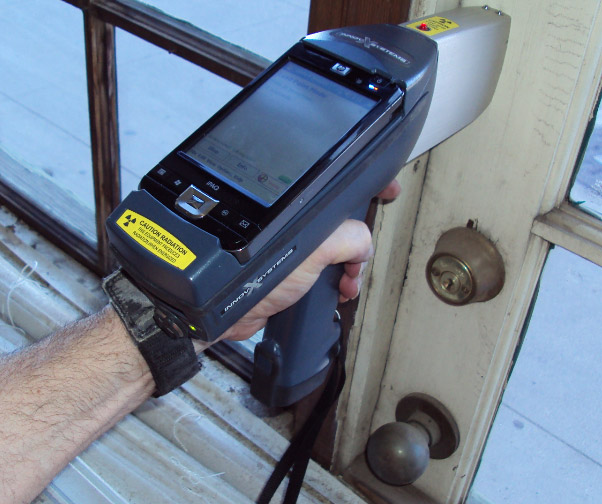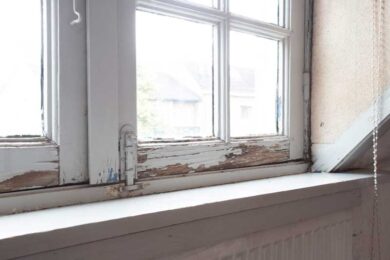Comprehensive Lead Paint Removal Service in NYC-- Accredited and Qualified
Wiki Article
Step-by-Step Process for Effective Lead Infraction Remediation
Resolving lead infractions requires a precise and organized strategy to make certain both safety and security and governing conformity. The trip starts with the specific discovery and analysis of contamination resources, using innovative analysis tools. Following this, adherence to federal and state policies is critical to formulating an effective removal strategy. Such a strategy should information the details approaches and timelines for activity. The actual remediation calls for experienced personnel to implement these plans while purely adhering to security protocols. But what happens after the removal is finished? The answer depends on understanding the vital post-remediation methods that guarantee long-term safety and security and neighborhood wellness.
Discovery and Analysis
Detection and assessment are crucial actions in the remediation of lead infractions. To guarantee a reliable removal process, it is important to carry out a detailed examination of the atmosphere where potential lead exposure exists.As soon as detection is completed, a detailed analysis has to be taken on. This includes assessing the level and seriousness of contamination, in addition to identifying populaces in danger, specifically youngsters and expecting women. Danger assessments often include sampling and laboratory evaluation, environmental studies, and health influence studies. The gathered data need to be thoroughly recorded to support the development of an efficient remediation method (Lead Violation Removal in NYC).
Furthermore, it is important to prioritize areas with the highest degree of contamination and those that position the biggest health and wellness dangers. Effective interaction with stakeholders, consisting of homeowner, citizens, and public health and wellness authorities, is important for making sure that all parties are notified regarding the findings and the succeeding steps needed for remediation. This preliminary discovery and analysis phase lays the groundwork for an effective lead infraction removal procedure.

Lawful and Regulative Compliance
Navigating the landscape of lawful and regulatory compliance is an essential aspect of effective lead infraction removal. Conformity guarantees not only the safety of affected populaces yet likewise the integrity and lawful standing of the organization accountable for remediation.State and regional policies can differ, commonly enforcing added commitments or more strict standards. As a result, a detailed understanding of all relevant lawful frameworks is crucial. This involves precise documentation of all remediation tasks to show conformity. Failing to follow these laws can lead to serious fines, consisting of significant penalties, legal action, and reputational damages.
Engaging legal professionals specialized in ecological law can promote browsing these complexities. Routine training and qualification for all workers included in the remediation procedure are likewise obligatory to make certain adherence to safety and regulative standards. By focusing on lawful and regulative compliance, companies can properly minimize threats and accomplish a successful remediation end result.
Planning the Remediation
Efficiently intending the removal of lead violations starts with an extensive analysis of the contaminated site. This first assessment ought to include a comprehensive website investigation to determine the degree and concentration of lead contamination. Comprehensive sampling and laboratory evaluation are extremely important to develop an exact contamination account. This data-driven strategy makes sure that removal initiatives are suitably targeted and efficient.When the contamination is mapped, a threat evaluation must be conducted to examine prospective health and wellness dangers to people and the environment. Lead Violation Removal in NYC. This evaluation should take into consideration aspects such as exposure pathways, populace susceptability, and environmental influences. The insights collected will certainly form the basis for selecting a suitable removal approach
Consequently, setting clear, achievable objectives for the remediation project is essential. These get more purposes need to line up with governing requirements and stakeholder assumptions to guarantee compliance and area approval. Creating a comprehensive removal plan that lays out techniques, timelines, and source allotment will certainly help with an organized method to the cleaning process.
In addition, it is important to engage with stakeholders early and maintain transparent interaction throughout the planning stage. This consists of informing neighborhood neighborhoods, click here for info obtaining required authorizations, and coordinating with governing companies to make certain all legal and step-by-step needs are satisfied. A well-crafted remediation strategy not only resolves the contamination efficiently but likewise constructs count on and collaboration amongst all celebrations entailed.
Implementing the Removal
With a well-structured removal strategy in place, the focus moves to the real execution of the remediation tasks. This stage includes activating the required resources, including skilled employees, customized devices, and premium materials. Begin by clearly delineating functions and obligations to make sure accountability and seamless control among group participants.This consists of establishing up control locations to avoid lead dirt and particles from spreading, as well as employing air purification systems to keep air quality. Utilize methods such as damp scraping, chemical removing, or encapsulation, depending on the severity and place of the contamination.
Throughout the removal process, conduct routine evaluations and air top quality checking to guarantee conformity with regulative standards. Reliable communication with stakeholders, consisting of building owners and owners, is vital to maintain them informed of progression and any unexpected advancements. By meticulously following these steps, the remediation activities can be executed effectively and properly, ultimately mitigating lead threats.
Post-Remediation Techniques
Post-remediation methods play a critical role in guaranteeing the long-lasting success of lead infraction remediation efforts. These methods include continuous surveillance, upkeep, and area education and learning to stop future lead direct exposure and make certain a safe atmosphere.First, routine surveillance is vital. This entails routine screening of the previously influenced areas to make sure that lead levels remain within secure limitations. Residential property owners ought to establish a schedule for these tests, preferably in cooperation with qualified ecological specialists.

Third, educating the neighborhood plays a crucial duty in maintaining the advantages of remediation. Homeowners and building managers need to be educated concerning the threats of lead direct exposure and the ideal techniques for preserving a lead-safe environment. Workshops, informational handouts, and area conferences can be effective devices for sharing this info.
Conclusion
Effective lead violation remediation needs a comprehensive, systematic strategy encompassing discovery and evaluation of contamination, adherence to legal and governing standards, meticulous preparation, and reliable execution of remediation efforts. Post-remediation strategies, click to read more including constant surveillance and community education, are important to sustain a lead-safe atmosphere. Partnership with ecological specialists ensures continuous compliance and defense of public health. This methodical procedure emphasizes the importance of thoroughness and watchfulness in attending to and mitigating lead contamination.Report this wiki page